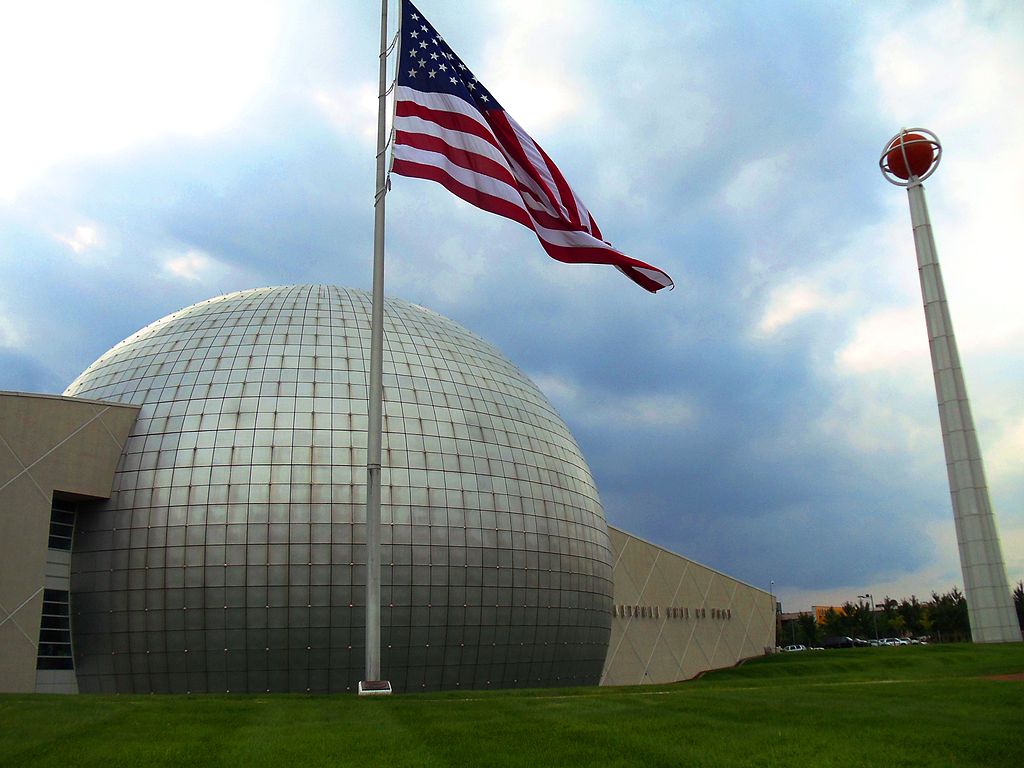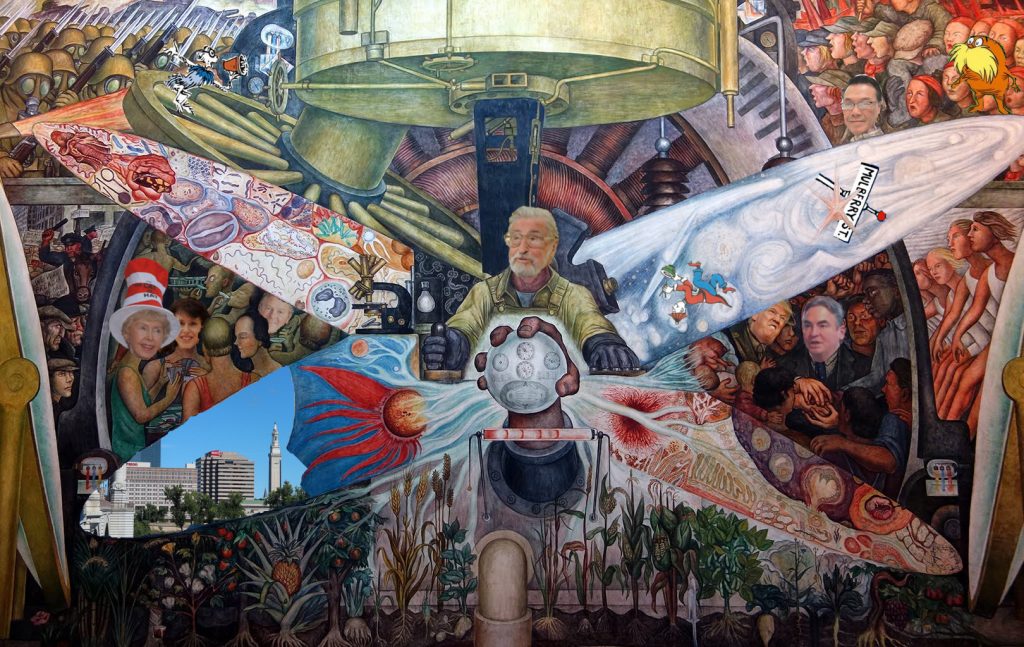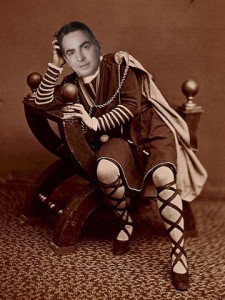Analysis: Seuss (and a City) at the Crossroads…
If a misinformed Cantabrigian librarian had not done enough to catapult Springfield into the national spotlight, surely the eye-rolling imbroglio at the Dr. Seuss museum has launched the city further into controversy. Like clockwork, Mayor Domenic Sarno jumped feet first into the situation, prolonging the whole episode.
Joined by some deep pockets, Sarno moved to save a mural depicting an And to Think That I Saw It On Mulberry Street scene from destruction. The Springfield Museum Association, which runs the Seuss Meseum, plans to ax the mural after local children’s authors squawked about its culturally insensitive—though common for 1937—depiction of a “Chinaman.” The situation underscores how unprepared the Association, Dr. Seuss Enterprises and the city were for the scrutiny this facility has attracted.
Despite growing up in Springfield and basing Mulberry Street on the short Union to Maple connector of the same name, Dr. Seuss, nee Theodor Geisel, spent little time here as an adult. The Dr. Seuss Memorial Sculpture Garden opened ten years after his death, allegedly inspired by his final—and first in 22 years—visit to the city in 1986. News accounts around his death mention no philanthropy directed at the city.
Moreover, Geisel resisted commercializing his work and what Springfield-related licensing came well after he was gone.
Geisel’s ambivalence about Springfield is not reason to ignore his legacy here. But the mad dash to cash in has let a miasma settle over the Seuss Museum.

Dr. Seuss and Cat-in-the-Hat statue (via massvacation.com)
The Sculpture Garden seemed to find that balance well enough. Some may consider the installation garish, framed by the Quadrangle’s scholarly buildings. Whatever the aesthetics, with the library’s children’s department stocked with Geisel’s books a short walk away, it worked.
The museum was different. Wedged into the former Connecticut Valley Historical Museum, The New York Times’s assessment laid bare that it was, in essence, an attraction, not an educational endeavor, even one geared to children. It was less to teach than to celebrate Geisel and his creations. It skipped over the racist cartoons he drew—and later regretted—earlier in his career, thereby passing on an opportunity to highlight his own growth as a person.
Yet, the Seuss museum also clearly wanted to be a bit more than that. Some exhibits do lurch toward the curatorial and then there is the (cancelled) Children’s Literature Festival that started all this.
To be clear, the children’s authors who criticized the mural unnecessarily ignited a conflagratory controversy over barely anything. The image is the same as the current edition of Mulberry Street. When the authors objected, they should have made clearer that adding context about 1937 attitudes might be corrective. Instead, in this awful political moment, they inadvertently empowered those who diminish legitimate concerns about bigotry and cultural stereotypes. The authors refusal to meet museum officials looked bad, too.

The offending image. Stereotypical, yes, but of its time. Confronting Geisel’s complex, and ultimately progressive legacy early on could have avoided this nonsense (via WWLP.com)
Originally, it seems the Springfield Museum Association concurred—the mural’s painter has family ties to the Association. But Big Seuss intervened and demanded its removal. An opportunity to add the context The Times found lacking in the museum was lost.
This alone underscores the business—not educational—relationship between the museum and Dr. Seuss Enterprises. The latter’s fear of brand damage demanded the entire mural come down, rather than simply putting up a sign that could provide all the educational and academic context reasonable people could require.
This echoes the critique in The New York Times. Dr. Seuss Enterprises and the Association claimed Geisel’s earlier drawings were absent because the museum was not the right place for them. Had they been there, however, it may have muted the current criticism.
Sarno only made matters worse. Already triggered by the Cambridge librarian’s simply silly rejection of Seuss books, Sarno burped a few bars disapproving of the political correctness in removing the mural. Given the mayor’s Trump-ward lunge of late, this was bad enough. He, too, missed an opportunity to rise above the extremes in this Whoville-sized scrap.
What started as mere outtakes from Sarno’s Apprentice tryouts morphed into full-blown theater of the absurd. Appearing at The Student Prince with its owners Andy Yee and Peter Picknelly, Sarno announced plans to buy the mural. Never mind that the mural is painted onto the wall and cannot be physically removed, the appearance was, according to those who were there, ridiculous.
Yee remained dignified, saying he believed the image was inoffensive. Sarno’s motives—seizing media attention—were clear. Picknelly’s were less so. Perhaps the busing mogul hoped to generate some good will before his next row with rail advocate Eric Lesser.
In any event, the Association replied: No thank you, Dom-I-Am, we will not sell for a song; the mural’s remaining time is not long.
The Times’s story and other pieces critical of the omission of Geisel’s controversial work were a warning. Dr. Seuss is a big name and internationally renowned. That’s why Big Seuss wanted the mural down, to protect the good doctor’s name. However, that name also means errors, whether piddling or paramount, can garner less-than-flattering national headlines.

In nearly 60 years, has the Hall of Fame ever kicked up this much dust? (via wikipedia)
There is no reason Springfield cannot handle the scrutiny. It already hosts an internationally recognizable museum. Like all sports, basketball can attract criticism and controversy. Whether because the NBA and Hall of Fame face the spotlight more frequently or because the city and officials keep quiet during hullabaloos on the court, rarely has the Hall’s action led to Springfield looking bad.
(Though, Sarno’s increasing concurrence with the provocateur-in-chief would make for an interesting weekend should he serve long enough to see LeBron James or Steph Curry’s enshrinement. Thankfully, Sarno is not Canton, Ohio’s mayor, right now.)
The stink from this nonsense shall remain for some time. Still, there are lessons to learn.
Perhaps after the Springfield History Museum’s success, the Museum Association grew complacent on the Seuss Museum. It was ready for national accolades, but not national criticism. One cannot wonder if the Seuss facility is responsible for the $25 admission price. While that covers entry to all five museums at the Quadrangle—and Springfield residents get in for free—the fee rivals that of New York museum and is twice the museums’ 2012 admission.
As for Seuss Enterprises, the decision to pursue profits—or protect trademarks—came long ago. The group should reassess its role with nonprofit endeavors like the Seuss museum. It can’t easily micromanage a museum and make sound commercial decisions. Tensions will arise as they did here.
Reflections may be coming. Dr. Seuss Enterprises’ chief Susan Brandt and museum officials may meet soon to discuss what has transpired.
Springfield’s embrace of Geisel, while earnest, was only seriously reciprocated from beyond the grave. That’s important to remember. City elders’ motives always included capitalizing on his legacy, at least to a point. It reflects a sorrier—and repeatedly unfulfilling—focus on tourism to revive the city. One can draw a straight line from the Seuss museum to fanciful ideas like a baseball stadium or aquarium.
The city’s future lies in CRRC’s railcar plant, Union Station, improved transportation connections and developing an arts and start-up economy. Even MGM, though inspired by tourism worship, straddles economic visions enough to leave its fate uncertain, but hardly doomed.
Of the parties overcome by this debacle, the city has the most to lose. The museums will endure as they always have. Unrepresentative librarians cannot take down Big Seuss’s bread and butter, the books themselves. Springfield can and should fete its famous natives, but it can ill-afford to haphazardly commodify them.
In short, unless Springfield innovates a whole awful lot to build its future, nothing is going to get better. It’s not.

